Better than other batteries in many respects! Heat output of aluminum heating radiators: table
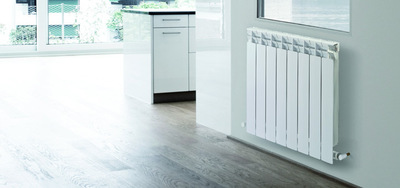
Aluminum batteries have some advantages over others. It is light weight, easy to install and has good heat dissipation.
Along with technical indicators, design is also highlighted, since the metal is quite easy to process.
Content
Technical characteristics of aluminum heating radiators
When describing heating batteries, take into account 6 factors, including: pressure indicators, dimensions, thermal efficiency, design, service life.
Center distance
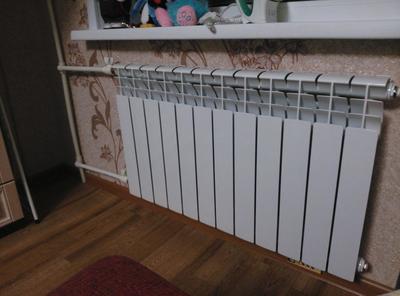
This is the gap between the section collectors. Most devices have a standard value of 350 or 500 mm, but there are also many variations. The minimum value is 200 mm, maximum — 2000.
Small devices are used for installation near the floor, and long ones - in bathrooms. Medium-sized devices are usually installed in niches, if any, but this is not mandatory.
Working pressure
Aluminum radiators are capable of maintaining operation at 6—20 atm. But much more common are devices with a smaller range: from 10 to 16. The exact value is specified in the technical data sheet and is determined by the manufacturing method. This value is also affected by the wall thickness, but it also reduces the amount of energy that the battery transfers to the atmosphere.
If aluminum devices are planned to be installed in an apartment building, You should contact the management company with the question: what pressure is maintained in the heating main. This will help to select a radiator for the given conditions.
Attention! It is better to choose a battery whose sections can withstand a load greater than the planned one. This will prevent the occurrence of breaks or other accidents in case of possible pressure surges.
Aluminum radiators are not the best option for placement in a multi-story building.

They do not go well with central heating, which is characterized by an unexpected increase in pressure. In autonomous systems, on the contrary, the operating indicator is unlikely to exceed 10 atm.
In technical documentation, the value can be presented in one of three units of measurement: 1 bar = 1 atm = 0.1 MPa.
Test pressure
Specified in the technical data sheet next to the working one. This indicator is responsible for the maximum permissible pressure value in the system. It is reached during testing or when cleaning pipes from scale and rust. The limit for aluminum is 25—35 atm. The number depends on the production technology and can sometimes be higher than the range.
Reference. The test pressure is achieved quite rarely, therefore, when choosing devices It is recommended to focus on the working indicator.
Thermal power: how many square meters of area is one section designed for?
Aluminum radiators give off energy well into the environment. The heat transfer coefficient is measured in watts. For aluminum it is from 80 to 210 W, depending on the design and size. The indicator can be increased by creating a special shape for the sections. High energy output allows saving on fuel consumption for heating.
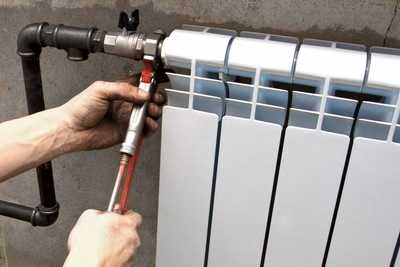
One section capacity 180 W capable of high-quality heating about one and a half square meters. Accordingly, a small aluminum product is capable of heating about 0.67, and the large one is 1.75 m2.
Some variations cover a larger area. To clarify this characteristic, please contact the manufacturer of the specific device.
Design, battery thread
Aluminum is a soft metal that is easy to process. Any objects made from it, including radiators, can have a very unusual shape. Thanks to this create a unique design that fits into the overall interior concept. Batteries are also quite easy to paint. Companies specializing in such devices are able to create a custom device that matches the ornament or pattern of the walls. This helps to hide the presence of a radiator or highlight it, making it a decoration.
Despite the above, it is not easy to find such devices. Most radiators have a standard shape and a regular silver color. In addition to those described, there are aluminum batteries that can be used to dry towels, as well as devices for placement in the floor. The latter are divided into two types:
- Convectors that transfer the energy of water into the air, warming it up. It is recommended to place such devices near windows to prevent the latter from fogging up.
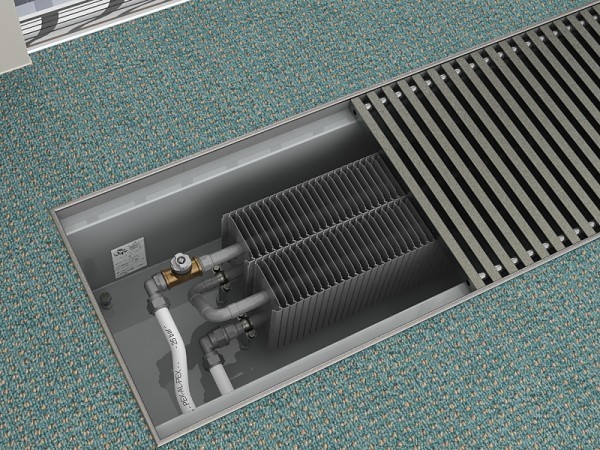
Photo 1. Aluminum heating radiator, placed in the floor. The device is covered with a grate from above.
- Underfloor heating system: The pipes are laid under the covering to heat the room from below. Installation of the system is permitted in rooms of any type, but the piping cannot be placed under heavy furniture or household appliances.
Important! Both convectors and underfloor heating can be combined with classic types of heating, but it is not recommended to combine them with each other. It is quite difficult and does not bring any visible benefit.
Most modern aluminum heating radiators have a standard thread size of one inch.
Service life
Radiator life depends on the quality of operationAluminum, like other metals, is subject to corrosion, so before installing devices, you should carefully select a heat carrier.
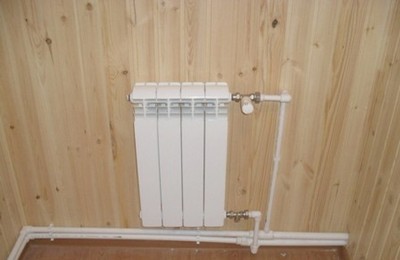
It cannot be changed in a centralized system, which is why such batteries are not recommended for installation in apartment buildings.
The service life is also reduced by physical damage. Aluminum is very soft and bends easily after a strong impact, which should be avoided. Under normal conditions, the radiator can last up to 20, sometimes 25 years. The meaning also depends on the manufacturing method.
Volume of water in the battery
To calculate the capacity of a section, it is necessary to know the linear dimensions of the device. The width of the batteries is usually 80 mm, but there may be smaller or larger ones. The value is specified in the technical data sheet.
Depth of aluminum radiators in 90% of cases makes up 80 mm, in 9% - 82 mm. The remaining items contain 25% more, but they are less stable and more often deteriorate due to the increase in volume: the water level increases the pressure indicator.
The height of the devices varies widely, but the center distance is used to calculate the capacity. This value is the gap between the battery collectors. The indicator in question has two common values: 350 and 500 mm, but you can also find devices from 200 to 3 thousand The actual height will be slightly greater.
To determine the volume of a section it is necessary to multiply the presented values. The product of the width and the cross-sectional area of the collector is added to the result. Changing the shape of the channels, which is rare, can contribute to increasing the capacity.
Comparative characteristics table: section size, heat output and more
The table presents several companies engaged in the production of aluminum batteries, as well as the technical indicators of the latter.

Photo 2. Comparison table of characteristics of aluminum heating radiators from several popular manufacturers.
Marking of aluminum radiators
Each battery is characterized by three symbols: one letter of the Latin alphabet and two digits. The first of the latter denotes the number of sections, the second - the number of walls with ribs. The letter is not always indicated, but if it is present, it denotes an abbreviated trade name. In rare cases, one more is indicated - V. Such radiators can be connected according to the lower diagram, they have a built-in regulator and a branch pipe.
Useful video
Watch the video, which explains how to increase the number of sections in an aluminum heating radiator.
Benefits for homeowners
Summarizing the characteristics of aluminum batteries, it is worth noting that their operation will be much better in private homes, rather than multi-apartment. This is due to the impossibility of manually controlling the entire heating process in a centralized system.






